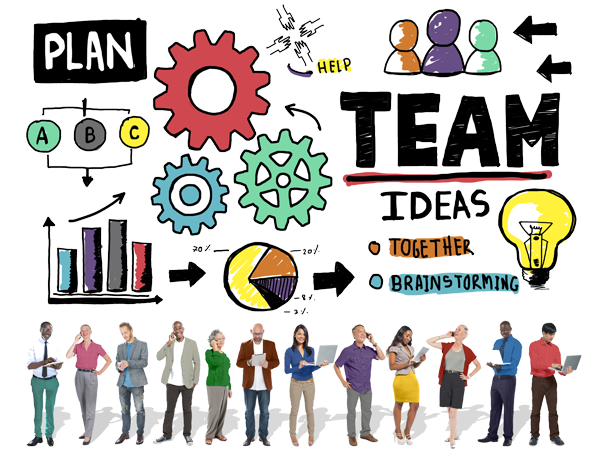By George Pitagorsky | Follow on Twitter!

Is optimal performance a primary goal for you and your organization?
What's Optimal Performance?
Optimal performance is sustainably achieving multiple, often competing, objectives efficiently, considering your real world constraints, and maximizing the use of your personal capabilities and resources. It is striking the right balance between peak performance, high performance and rest.
What's Peak Performance?
Peak performance is not the same as optimal performance. Peak performance is exceptional performance - performers, who may be individuals or teams, operate at maximum capacity. While this is very useful and powerful, it is not sustainable.
Consider a car operating at top speed all the time. How long could it last? But, moderate the speed and provide regular maintenance and your car will perform well for years, with the ability to hit peaks when you want it to.
That's the way you want to perform and the way you want your team to perform.
Synthesize These Elements
Optimal performance requires the synthesis of a suite of capabilities - process and project management, and the management of expectations, communications, conflict and change. Performance can be optimized when these are coupled with mindfulness, concentration and systems and process and the specific skills and information required to do the job, all applied in the right measures and at the right time.
Mindfulness, concentration, systems and process thinking and an open-minded attitude are the foundation. They enable the mental agility needed to know when to apply each capability. They enable the right mix of analytical and intuitive thinking. The right balance of heart and mind.
1 - Mindfulness
Mindfulness is the purposeful objective attention to what is occurring moment to moment, both internally and externally. Mindfulness enables responsiveness as opposed to reactivity.
2 - Concentration
Concentration makes undistracted focus possible. It promotes active, energetic relaxation.
3 - Systems and Process Thinking
Systems and process thinking recognizes that everything is caused by something and that within our projects and organizations events, people, departments, systems and procedures are interconnected. Seeing this interconnectedness helps to avoid taking action that while it might resolve a local issue will disrupt the overall process. This kind of thinking promotes objectivity and rational thinking.
Open-mindedness is the commitment to question even one's most dearly held beliefs and to be open to changing them when they are not supported by reality. It means listening to what others think and say and checking facts. With an open-minded attitude there is a chance for healthy communication and conflict resolutions that result in optimal solutions.
4 – Process and Project Management
Process and project management provide the analytical components needed to plan, execute and control work. Processes are the ongoing operational activities that are at the heart of performance. Projects are the temporary activities that create and change products and processes.
5 - Planning
Planning is at the heart of effective management. Our ability to identify the tasks to be performed, the roles that must be played to perform them and the time, cost and effort required promotes success. Identifying and addressing risks and uncertainties makes sure that we and all those involved do not think that the plan is an absolute prediction of what will happen. As the plan is executed, control is applied to see if things are progressing according to plan, and if the plan is still relevant given current circumstances.
6 – Stakeholder Satisfaction
Satisfied stakeholders are the primary indicator of effective performance. Stakeholders are satisfied when their expectations are met. Expectations are met when they are managed well enough to ensure that they are rational and meaningful. Rational expectations are ones that can be satisfied under real world conditions. Rational expectations are set based on planning with explicit attention to risk and uncertainty. Expectations are continuously kept rational by assessing current conditions. Rational expectations are founded on the acceptance that everything is subject to change and that we cannot always get what we want.
7 - Communications and Conflict Management
Communications and conflict management are the means for negotiating and managing expectations. Communications management includes the identification of stakeholders and their need to be informed and involved in decision making. It also includes all the tools and techniques required to exchange information and knowledge in keeping with the needs of the situation at hand. Effective communication and healthy conflict management lead to effective decisions. They require sensitivity to one’s own emotional reactions, beliefs and values as well as the reactions, beliefs and values of others. That sensitivity is enabled by mindfulness and open-mindedness coupled with the intention to do no harm.
8 - Change management
Change management ensures that project results are effectively implemented and that processes continuously improve. Project and process management communication, conflict and expectations management support change management.
Combine and Intertwine for Strength
These factors are like the strands of a rope. When intertwined they create the strength needed to perform optimally. They operate on multiple levels. As individuals we apply them in interpersonal relationships to promote harmony and skillful behavior. In teams we use them to get work done and to navigate the challenges of interpersonal and inter-group cooperation. At the organizational level they enable strategy setting, planning, and effective operations.
Is optimal performance one of your explicit goals? What do you do to achieve it?
Questions or comments? Feel free to share them below!
You may also like: